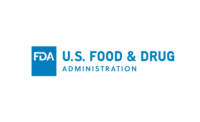FDA Announces Plan to Phase Out Synthetic, Petroleum-Based Food Dyes From U.S. Food Supply

Image credit: Freepik
On April 22, 2025, the U.S. Department of Health and Human Services (HHS) and the U.S. Food and Drug Administration (FDA) held a press conference announcing their intent to phase out the use of synthetic, petroleum-based synthetic dyes from the nation’s food supply. The agencies described the action as a “major step forward” in the “Make America Healthy Again” (MAHA) agenda, popularized by HHS Secretary Robert F. Kennedy Jr. and adopted by the Trump Administration.
Calling attention to the “patchwork of state legislation” on chemical food additives cropping up across the U.S., and the need to provide national regulatory consistency and clarity for the food and beverage industry, FDA Commissioner Marty Makary, M.D. presented the agency’s plan to phase out synthetic, petroleum-based food dyes from the food supply:
- Establishing a national standard and timeline for the food industry to transition from petroleum-based dyes to natural alternatives
- Initiating a process to revoke authorizations for two synthetic food colorings—Citrus Red 2 and Orange B—within the coming months
- Working with industry to eliminate six remaining synthetic dyes on the U.S. market—green dye 3, red dye 40, yellow dye 5, yellow dye 6, blue dye 1, and blue dye 2—by the end of 2026
- Requesting that food companies remove red dye 3 from their products sooner than the current 2027–2028 deadline.
“These steps that we are taking mean that FDA is effectively removing all petroleum-based food dyes from the U.S. food supply,” remarked Dr. Makary.
FDA also intends to authorize four new natural-ingredient color additives in the coming weeks, while also accelerating the review and approval of others.
Additionally, the agency plans to collaborate with the U.S. National Institutes of Health (NIH) to conduct research on how food additives impact children’s health and development.
“For the last 50 years, American children have been living in a ‘toxic soup’ of synthetic chemicals” Dr. Makary said, noting that other countries around the world are not as permissive with the ingredients allowed in their food as the U.S. “The scientific community has conducted a number of studies raising concerns about the correlation between petroleum-based synthetic dyes and several heath conditions, including attention deficit hyperactivity disorder (ADHD), obesity, diabetes, insulin resistance, cancer, genomic disruption, gastrointestinal (GI) issues, and allergic reactions… So why are we taking a gamble?”
Secretary Kennedy: FDA Intends to Get Rid of "Every Ingredient and Additive in Food" it Legally Can Address
Secretary Kennedy also presented at the press conference, and shared his ambitious goal of “getting rid of every ingredient and additive in food that [FDA] can legally address.” He said that industry has historically “cast a dark shadow over [FDA]” and “suppressed the science… so that there are shockingly few studies on [additives],” but “NIH is now narrowly targeting food additives through scientific studies, so one-by-one, we can start eliminating them where we can.”
When asked, Secretary Kennedy was not able to clearly define how FDA would take action if food companies did not voluntarily comply with the food dye phase-out; rather, he said that the industry is complying thus far, and he is optimistic that companies will continue to work with the agency to remove targeted dyes from their products. At the same time, Secretary Kennedy did acknowledge that FDA does not have any formal agreement with industry. Dr. Makary added, “there are a number of tools at our disposal… [but] let’s start in a friendly way, and see if we can do this without any statutory or regulatory changes.” He continued, “We are exploring every tool in the toolbox to make sure this gets done, but [industry] wants to do this. So why go down a complicated path with Congress when [companies] don’t want to deal with a patchwork of 30 different state [laws]?”
Additionally, when asked how consumers would be able to tell which foods were compliant with the food dye phase-out, Secretary Kennedy said FDA will post all available information about every additive on an open-source website, and will encourage companies to develop barcode-scanning apps that will tell consumers what is in a product. However, labeling decisions would have to go through Congress, and FDA “is not yet in a place” to enter such discussions.
FDA’s Struggle to Keep Pace With State Actions, Public Pressures to Regulate Chemical Food Additives, Dyes
FDA’s Previous Approach to Food Chemical SafetyFDA and HHS’ announcement shortly follows FDA’s ban of controversial colorant red dye 3 announced in January 2025, which was prompted by pressures from consumer protection groups, legislators, and the public. Synthetic food dyes have become increasingly scrutinized in recent years due to their purported harms to human health, such as hyperactivity and neurobehavioral effects in children. In the case of red dye 3 specifically, before its authorization for food use was revoked, it had already been banned from cosmetics due to studies showing its potential carcinogenicity in male rats. However, even though FDA invoked the Delaney Clause to ban red dye 3 based on this potential carcinogenicity, the agency maintained that the current scientific consensus is that the additive’s mode of carcinogenicity in animals is not applicable to humans.
In a December 2024 Senate hearing, when questioned about the agency’s failure to take swift action to remove potentially harmful synthetic food dyes from the market, former FDA Commissioner Robert M. Califf, M.D. warned, “Remember, if we ban something, it will go to court. If we do not have the scientific evidence to support its ban, we will lose in court.” He also said, “I want to point out that we have a very small staff and we have repeatedly asked for better funding for chemical safety. Please look at our request for funding for the people who do this work.” This was before the election of President Trump and subsequent mass layoffs swept HHS and FDA, affecting staffers with food safety oversight roles.
Before the administration change and despite resource constraints, FDA was intending to develop an enhanced, systematic process for the post-market assessment of chemicals in food. Whether these plans are still in motion is unclear, but since assuming office, Secretary Kennedy has directed FDA to explore rulemaking to eliminate the “Generally Recognized as Safe” (GRAS) process, which is widely considered by critics to be a “loophole” that allows food companies to introduce ingredients to the food supply without oversight or a formal safety review.
A Patchwork of State Laws to Ban Artificial Food Dyes, Chemical Additives
Becoming impatient with FDA inaction against chemical food additives, some states have taken matters into their own hands. California was the first U.S. state to buck federal food additives regulation and enact its own bans of many chemical additives and synthetic food dyes, with the passage of the California Food Safety Act and California School Food Safety Act in October 2023 and August 2024, respectively. Specific to food colorants, the California School Food Safety Act prohibits red 40, yellow 5, yellow 6, blue 1, blue 2, and green 3 from foods sold or offered at state public schools.
Following in California’s footsteps, in April 2025, the Arizona Healthy Schools Act was signed into law, prohibiting “ultra-processed foods” foods from being served in public schools, meaning any foods containing dyes yellow 5, yellow 6, blue 1, blue 2, green 3, red 3, or red 40, as well as additives potassium bromate, propylparaben, titanium dioxide, and brominated vegetable oil (BVO). Additionally, in March 2025, West Virginia House Bill 2354 was signed into law, which mandates that, by January 2028, foods containing red 3, red 40, yellow 5, yellow 6, blue 1, blue 2, green 3, butylated hydroxyanisole, and propylparaben are not allowed to be sold in the state.
Stakeholder Views on a Synthetic Food Dye Phase-Out
Peter Lurie, M.D., M.P.H., President of the Center for Science in the Public Interest (CSPI), lauded FDA’s intent to phase out synthetic food dyes, stating, “The most important thing to know about food dyes is that their only purpose is to make food companies money. They are purely cosmetic, serving no nutritional function. In other words, food dyes help make ultra-processed foods more attractive, especially to children, often by masking the absence of a colorful ingredient, like fruit.” He continued, “The second thing people should know, especially parents and other caregivers, is that these synthetic dyes are known to trigger or exacerbate behavioral problems in some children. The harm dyes cause isn’t hypothetical—it’s real.”
Like CSPI, Consumer Reports applauded the goal of FDA's plan to phase out the use of petroleum-based food dyes, but also called out the plan for being "short on details on what action the agencies will take if food companies fail to remove the dyes by the end of 2026," noting that it relies primarily on food companies' voluntary cooperation. Additionally, the group said that recent staff and budget cuts at HHS and FDA could undermine the agencies' abilities to deliver on their plan. Consumer Reports also believes this plan could take years to achieve, and urges states to continue to adopt their own additives bans in the meantime. Brian Ronholm, the group's Director of Food Policy, said “Synthetic food dyes provide no nutritional benefit but pose neurological problems to some children. These dangerous dyes don’t belong in our food, especially since safer alternatives are readily available. Banning these dyes will protect the public and prompt manufacturers to switch to safer ingredients they already use in the products they sell in Europe and many countries.” However, "[FDA's] multistep plan relies on voluntary industry efforts that will simply prolong the amount of time it will take to get dangerous dyes out of our food... We need an enforceable ban on harmful synthetic food dyes," he said.
Representing an industry perspective, the National Confectioners Association (NCA) said, “The food and beverage industry needs time to find safe and viable alternatives. In most cases, there are not immediate replacements available. Approvals for food color additives in the U.S. require a lengthy process, taking a decade or longer and millions of dollars.” The group added that it believes “FDA is the rightful national regulatory decision maker and leader in food safety,” calling for “more transparency, more funding, and more staff resources for FDA to continue fulfilling its mission.” NCA continued, “We are in firm agreement that science-based evaluation of food additives will help eliminate consumer confusion and rebuild trust in our national food safety system. We follow and will continue to follow regulatory guidance from the authorities in this space, because consumer safety is our chief responsibility and priority.”
Looking for a reprint of this article?
From high-res PDFs to custom plaques, order your copy today!







